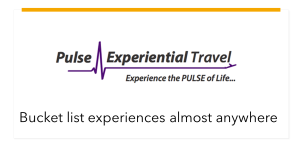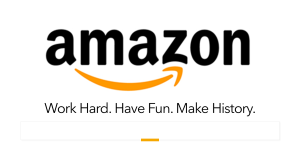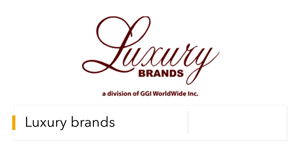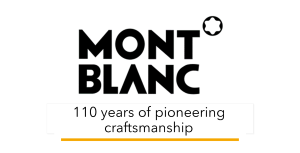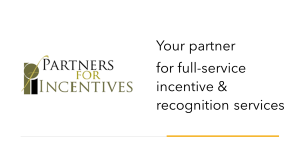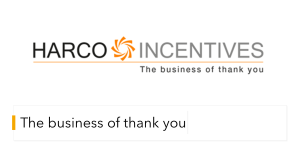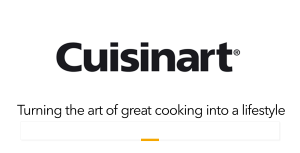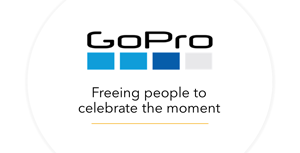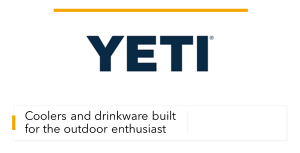Trendspotting: 10 Things Merchandise and Gift Card Program Planners Need to Know Now
 Retaining top performers and preparing them to take over the reins in the next decade is a top priority for most organizations. A crucial part of that process will involve merchandise and gift card programs that inspire and connect with these future leaders, keeping them happy, productive and engaged. A new study by the Incentive Research Foundation identifies 10 trends that will help managers better understand what’s in store for the future in terms of this key motivational tool. Here’s a look at the IRF’s10 “business drivers” and what they mean to planners using merchandise and gift cards in their programs.
Retaining top performers and preparing them to take over the reins in the next decade is a top priority for most organizations. A crucial part of that process will involve merchandise and gift card programs that inspire and connect with these future leaders, keeping them happy, productive and engaged. A new study by the Incentive Research Foundation identifies 10 trends that will help managers better understand what’s in store for the future in terms of this key motivational tool. Here’s a look at the IRF’s10 “business drivers” and what they mean to planners using merchandise and gift cards in their programs.
Business Driver #1: Positive Impact of the Economy
The number of organizations that believe economic conditions are having a negative impact on incentive programs is declining. While a third of the industry felt that the economy was having a negative impact on merchandise and gift card programs at the recession’s height in 2009, that number dropped to less than 10% by late last year. While a strong 40% of the industry still feels that the economy has little to no impact on these programs, a more significant 50% of program owners and suppliers feel the late 2014 economy is having a positive impact on merchandise and noncash programs. Not only is the current view a positive outlook for noncash reward programs, a comparative review of 2008-2014 data reveals that the economic impact of the recession was felt less dramatically at the start of the recession, and the recovery was swifter in the gift card and merchandise side of the market compared to other sides of the market such as travel.
Takeaway: Both the relative long-term buoyancy and the overall current positive state bode very well for merchandise and gift card reward programs in 2015 and beyond.
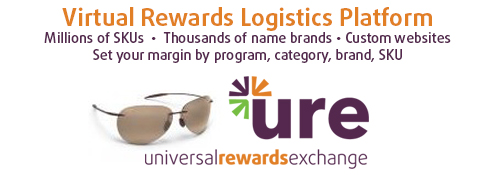
Business Driver #2: Budgets Are Trending Up
As one might expect, this positive economic outlook reflects strongly on merchandise and gift card program budgets for 2015. A 2009 IRF Pulse Study revealed that almost 60% of program owners were reducing their program budgets. The very next year, however, 55% of program owners reversed that trend and began increasing their budgets. Almost 50% of planners in the fall of 2014 said they’ll be increasing their budgets; additionally, per-person spend is up. The IRF’s most recent poll among program planners revealed that 25% of planners were spending $50-$100 per person; 25% were spending from $100-200 per person; and 30% were spending in excess of $300 per person.
Takeaway: Barring unforeseen economic or extreme political changes, budgets will maintain a strong positive trajectory for the next few years.
Business Driver #3: Experiences Lead the Way
We’re entering a phase that has been called the “Experience Economy,” with more robust experiences desired by different age groups. Example: Many incentive travel program owners now forgo standard merchandise pillow gifts and instead, offer robust “fitting experiences” for a range of products while trip earners are on the property. This trend is also evident in the IRF’s most recent pulse study, which shows that 21% of program owners would be adding experience-related products and gift cards (which offer a variety of shopping experiences) to their award portfolios heading into 2015.
Takeaway: Suppliers of Merchandise and Gift Card-based award and recognition programs must ensure the overall experience intended for each individual recipient is appropriate and rewarding – whether employee, salesperson, channel partner, etc.
Business Driver #4: Limited Luxury Returning
Balancing public sensitivities to extravagance and indulgence with the need to provide a personally rewarding experience to participants was one of the most significant influencers of noncash program design during the recent recession and recovery. IRF studies at the height of the recession showed more practical items like housewares and apparel at the top of what was included in noncash reward and recognition programs. Today, however, in a rebounding economy, we’re seeing electronics and “open-loop” gift cards at the top of the list. Both of these can be seen as items of luxury as well as necessity. Whereas electronics used to fit squarely into an entertainment vertical, the role of iPads and other such devices in maintaining awareness and connectivity in an increasingly disrupted environment now allow them to straddle the fence between necessity and luxury. Likewise, open-loop cards provide the opportunity to meet both day-to-day financial obligations and satisfy a desire for luxury.
Takeaway: Items that can be personalized and items that ride the line between hedonistic and security drives will be popular in 2015 and beyond.
Business Driver #5: An App In Everything
There are now more mobile phones than people. Consumers in most industrialized regions now expect constant connectivity. The proliferation of mobile devices and apps is trending to merchandise having similar functionality. The last decade developed a consumer expectation of an app for everything, whether it’s finishing a work paper, planning a wedding, doing your taxes or monitoring your nutrition. Now, more processing power into ever smaller devices has led to a movement from an app for everything to an app in everything. Consider the wellness and wearable markets. Wellness products include everything from thermometers that report a child’s temperature to a parent’s phone to brassieres that detect early signs of cancer to designer bracelets that monitor not just steps but sleep patterns and other biometrics such as heart rate. Wearables include everything from vests that hug you when you receive a like on Facebook to goggles that monitor your location while skiing on the mountain.
Takeaway: We will no doubt see movement away from specific devices that maintain multiple applications to applications embedded in all aspects of daily life and products.
Business Driver #6: Wellness is a Booming Industry
A relatively large number of employers continue to introduce wellness rewards, noting that the use of noncash items drives participation, and employers are increasing their adoption of wellness incentives during open enrollment. Employers also may be focusing on wellness programs because of the link to worker risks and behaviors, which drive chronic conditions and account for a large percentage of overall healthcare spending. The wellness market itself is expected to be the next trillion dollar industry, with beauty/anti-aging products, mind/body products and nutritional weight loss products leading the way. The market is driven largely by health-conscious Millennials, as well as by Baby Boomers looking to maintain and increase quality of life. As programs continue to evolve, there is use for both financial and noncash incentives.
Takeaway: Both the amount of products used to incent wellness and the types of products labeled with wellness attributes will continue to grow.
Business Driver #7: Disruption as a Constant
According to the New England Journal of Medicine, the incidence of natural disasters worldwide has steadily increased, primarily since the 1970s. Coupled with the current rise in social, political and economic crises in the world, a strong case can be made that disruption is the new normal. Hurricanes, volcanoes, diseases such as Ebola, terrorists, unpredictable currencies, political fluctuations – today’s environment poses risks greater than ever before. This would be an issue for many businesses, but is exacerbated by the interconnected and multi-faceted nature of meetings and incentive travel. Preliminary IRF research shows that these forces are shifting the role of procurement, forcing program planners to deliver not only on cost/value metrics, but risk mitigation as well. As the need for disaster planning extends beyond backed up servers and redundant data to broad-based understanding and experience in managing potential issues, the IRF expects to see outsourcing and partnerships take on new meaning.
Takeaway: This trend will increase the use of reward & recognition programs, force suppliers to disclose their risk mitigation plans more readily and increase the number of organizations looking to outside partners for risk mitigation.
Business Driver #8: Mobile Proliferation
Mobile device saturation is leading many companies to allow employees to bring their own devices to work. In fact, over half the people in a recent survey believed “BYOD” could serve as a retention and recruitment tool, especially with Millennials. Executives must prepare to support the significant increase in the number of smartphones and tablets used by the workforce. More than two-thirds of firms identify implementing a mobile device management solution as a critical o high priority in the coming year. Mobile proliferation is also raising security and maintenance concerns for the CTO. This signals an opportunity for vendors to introduce apps that require no external maintenance or security burdens.
Takeaway: For incentive providers and program planners, this raises the likelihood that all program communications will not just need to be available on mobile devices, but will need to be configured across multiple platforms.
Business Driver #9: CEO’s Need to Attract and Retain Talent
Thanks to shifts in worker population demographics, CEOs are confronted with a smaller number of people entering the job market than the number leaving it. A 2014 Pricewaterhouse-Cooper’s CEO study found that 81% of CEO’s are focusing on talent, an emphasis rivaled only by technology investments. A full 90% of CEOs said they were changing their strategies for attracting and retaining talent, although nearly two-thirds hadn’t taken the first step to change their current approach. Incentives and recognition programs have a long established history of augmenting the employee value proposition of an organization and providing employee retention benefits to companies. Coupled with the executive focus on new talent strategies, this presents a strong opportunity for incentive and recognition program providers to offer value at the highest organizational levels.
Takeaway: Noncash reward & recognition programs will be a key tool for executives seeking to motivate multiple generations and “train up” the next group of leaders more quickly.
Business Driver #10: Answering the Question: ‘Engaged In What?’
Engagement as a concept was originally meant to engage a workforce in their core job role. However, in the new economy successful organizations need their employees to perform many non-core job roles such as trainer, brand advocate, innovator and change agent. Reward and recognition programs have proven to be more flexible than standard compensation systems and have a long history of agile implementation driving non-core job roles. According to research by Aberdeen, top-performing companies (i.e. those with the highest customer retention and year-over-year growth rates) were 90% more likely to invest in public recognition for top performers and 95% more likely to offer peer-to-peer recognition schemes.
Takeaway: As organizations continue to attract and retain top performers, agile noncash programs like gift cards and merchandise will be key strategic tools.
For more information on this study or the Incentive Research Foundation, go to
www.TheIRF.org Retaining top performers and preparing them to take over the reins in the next decade is a top priority for most organizations. A crucial part of that process will involve merchandise and gift card programs that inspire and connect with these future leaders, keeping them happy, productive and engaged. A new study by the Incentive Research Foundation identifies 10 trends that will help managers better understand what’s in store for the future in terms of this key motivational tool. Here’s a look at the IRF’s10 “business drivers” and what they mean to planners using merchandise and gift cards in their programs.
Retaining top performers and preparing them to take over the reins in the next decade is a top priority for most organizations. A crucial part of that process will involve merchandise and gift card programs that inspire and connect with these future leaders, keeping them happy, productive and engaged. A new study by the Incentive Research Foundation identifies 10 trends that will help managers better understand what’s in store for the future in terms of this key motivational tool. Here’s a look at the IRF’s10 “business drivers” and what they mean to planners using merchandise and gift cards in their programs.
.jpg)





